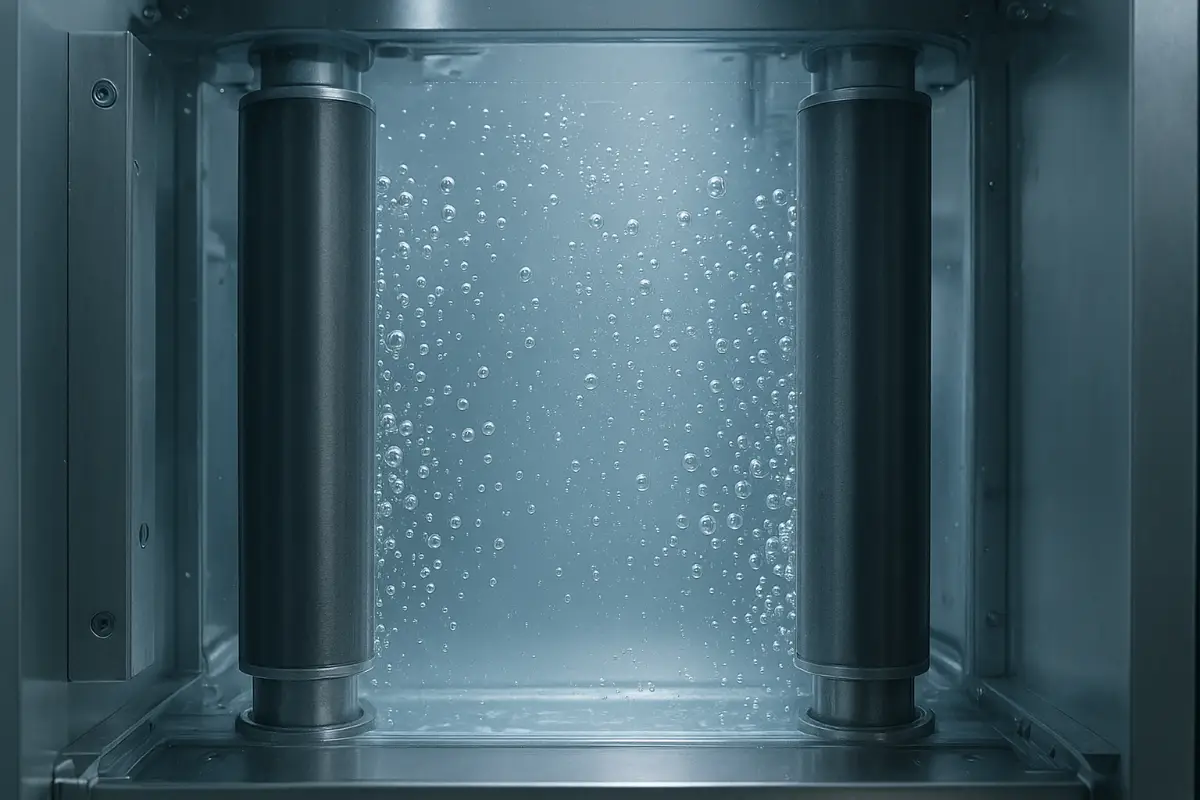| Summary |
|
German researchers have found a way to make water electrolysis far more efficient in space by using magnets instead of heavy machinery. The experiments, carried out at the Bremen Drop Tower, showed that simple magnetic fields can move gas bubbles away from electrodes in microgravity, boosting oxygen and hydrogen production without pumps or centrifuges.
On Earth, gravity pulls bubbles off the electrodes during electrolysis, keeping the process efficient. In orbit, bubbles cling to the electrodes, blocking reactions and slowing production. Current systems on the International Space Station (ISS) use complex pumps and centrifuges to separate the gases, but these consume a lot of power and raise the risk of breakdowns.
The research team tested their idea by running electrolysis in free-fall conditions that mimic space. They used platinum and iridium oxide electrodes with acidic electrolytes. Without magnets, current densities fell sharply as bubbles piled up. With a neodymium magnet nearby, hydrogen output jumped by up to 240% because bubbles detached more easily.
“One may think that extracting gas bubbles from liquids in space is as simple as opening a can of soda here on Earth. However, the lack of buoyancy makes the extraction process incredibly difficult, undermining the design and operation of oxygen production systems,” said Álvaro Romero-Calvo, an assistant professor at Georgia Tech, in a statement.
The effect comes from two magnetic forces. The Lorentz force, which results when electric currents cross magnetic fields, stirs the liquid and sweeps bubbles clear. The magnetic polarization force, which acts on the weak magnetic properties of the electrolyte, pushes bubbles toward the magnet. At low currents, the polarization effect dominates, while at higher currents, Lorentz-driven vortices take over.
To test real-world use, the researchers built a proton-exchange membrane (PEM) cell with platinum meshes and magnets on each side. In simulated microgravity, it produced gas at nearly the same efficiency as on Earth. Video footage showed bubbles detaching smoothly and collecting near the magnets, removing the need for pumps or moving parts.
They also built a cylindrical design where the Lorentz force spins the electrolyte into a vortex. Gas bubbles naturally drifted to the center and escaped, while the liquid stayed along the walls. The setup required only 0.1 milliwatts of extra power, far less than the electrolysis itself.
If proven in long-term tests, the approach could transform life-support systems for future missions to the Moon or Mars. Lighter, simpler equipment would save mass and power while reducing the risk of failure in deep space. The Bremen Drop Tower only provides nine seconds of weightlessness, but the results matched theoretical predictions. The team now aims to test the system during parabolic flights or on the ISS.
For astronauts, reliable oxygen generation is non-negotiable. Magnets may offer a direct way to keep supplies flowing without the mechanical complexity that current systems demand.
Source: Magnetically induced convection enhances water electrolysis in microgravity

